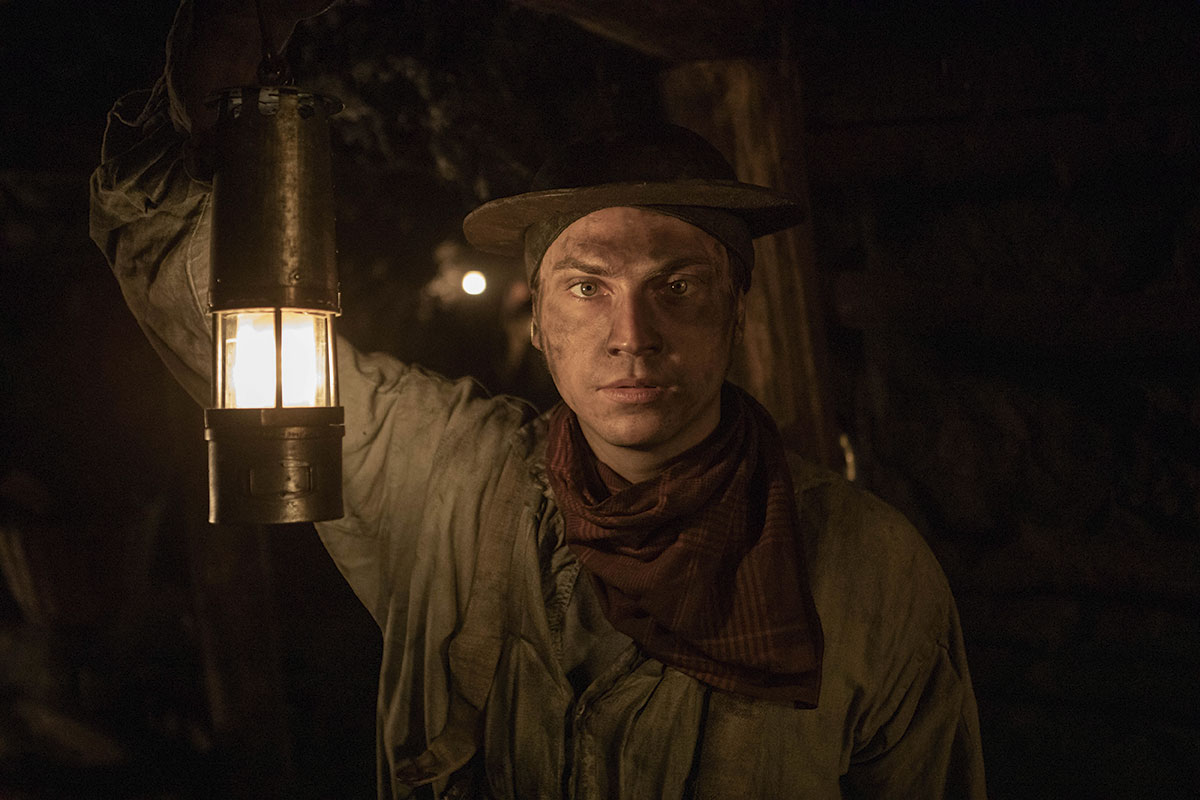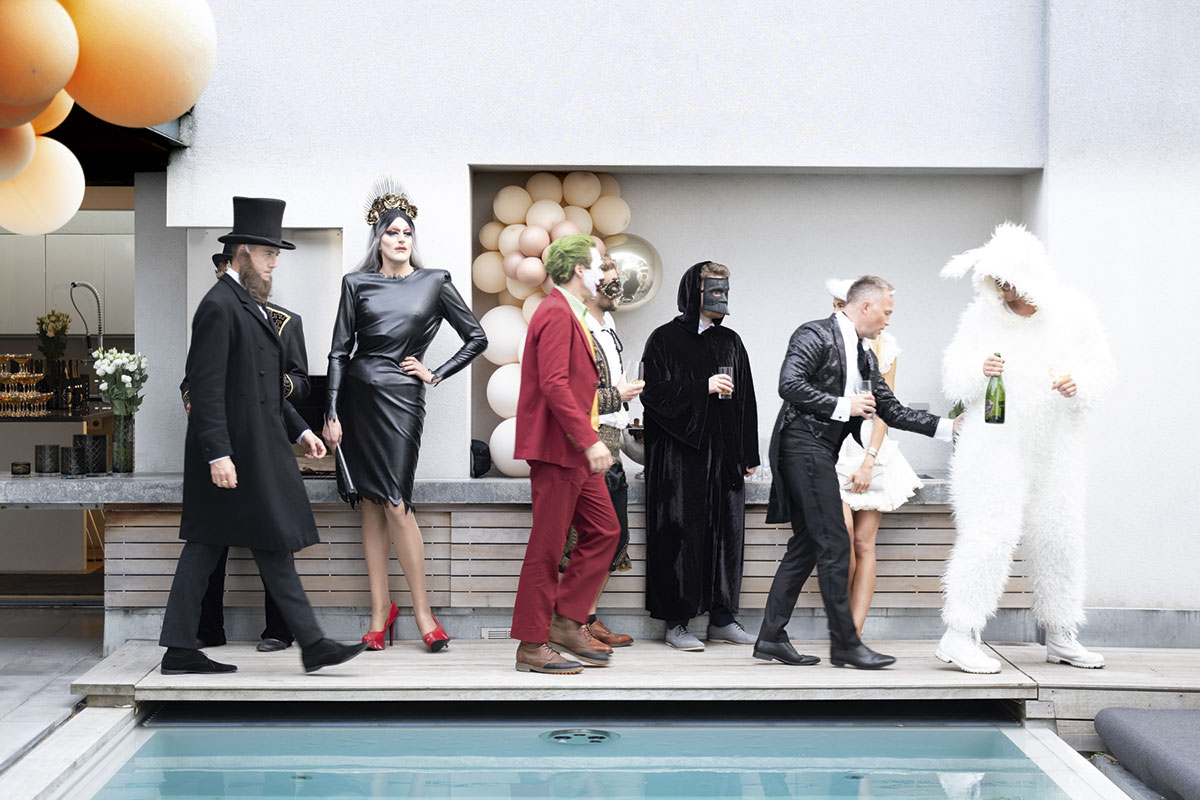
After more than 35 years of operation, TBI is closing its doors and our website will no longer be updated daily. Thank you for all of your support.
Exclusive: What the future holds for Europe’s public broadcasters
Public broadcasters face pressure like never before, with squeezed budgets and their very funding models under intense scrutiny. Marie-Agnès Bruneau takes a trip around Europe to find out what’s happening across the continent
Europe’s public service media have faced turbulent times of late, as the traditional licence fee funding model faces challenges across the continent. France dropped it this summer and the UK is considering following suit in 2027, but these two moves are not isolated.
Over the past three or four years, broadcasters across the Nordics have faced similar challenges, with licence fees either revamped or dropped altogether. Such moves have prompted searching questions about what to put in their place and, indeed, the future of public broadcasting as a whole.
Originally collected on households equipped with a TV set, the licence fee is as old as television is. Although some European public broadcasters carry some advertising, public funding represented 79.4% of their 2020 income, according to data from the European Broadcasting Union (EBU), with 17.4% coming from commercial revenues.
And while the licence fee has come under pressure, it remains a dominant model. Even though it has been dropped by some countries – and was never the model in others, such as swathes of countries in Eastern Europe – major markets such as Germany and Italy still use it.
Underlining this, the licence fee contributed 59.5% to total European media services funding in 2020, a year in which the model was used by organisations in 20 of the 56 European markets.
Looking for ‘technology-neutral’ mechanisms
European households paid an average €109 ($109) annual fee in 2020 and in some ways, the system – which resembles a subscription model – still looks current. So why is it suddenly being questioned?
In France, besides the political agenda of candidate Emmanuel Macron and his promise to reduce taxes if re-elected, there were several other reasons given. These included suggestions that it was outdated, because of changing consumption habits and the decline in use of TV set equipment.
Yet, data from French regulator Arcom says that French TV households in 2021 accounted for 90.9% of all households, down from 93.4% in 2018, with the funds collected declining in tandem.
In the case of France, the country’s government had to move quickly because the licence fee was collected together with another tax, which itself was axed, meaning the collection cost would then have been too high for the licence fee alone. The system was also claimed to be unfair, with all income brackets paying the same amount.
“Although each country is specific, overall, the main reasons for the past decade’s reforms [across Europe] were to modernise the mechanism and find a more neutral model than the licence fee, which is based on TV devices,” explains EBU media research supervisor, Florence Hartmann. “Germany and Finland anticipated the move, with reforms taking place as soon as 2013.”
“Each country is specific, but the main reasons for the past decade’s reforms were to find a more neutral model than the licence fee, which is based on TV devices” Florence Hartmann, EBU media research supervisor
Germany decided to maintain a flat licence fee, but extended it to all households instead of just the ones owning a TV set, she explains, while Finland replaced it with an individual public broadcasting tax based on revenues. “We now often see countries oscillating between these two solutions when addressing the issue of getting licence fee mechanisms to be more efficient.”
Fairness & social acceptance
Hartmann adds that other reasons can be social acceptance and/or fiscal evasion, but this does not necessarily imply that countries should drop the licence fee, she stresses.
“In Italy, the licence fee was not popular and they had a strong rate of tax evasion, but they did manage to modernise it. They changed the way it gets collected – it remains linked to the TV set, but is now collected via electricity bills. The tax evasion rate, which was above 30% in 2015-16, has fallen around 5-6%,” she illustrates.
“The German household model simplified the collection process and Switzerland adopted a system close to it. But for that, you need countries with housing registers and a certain amount of social consensus,” she adds. In Switzerland, a referendum over the licence fee’s future took place in 2018, with over 71% voting to retain it.
“There were some heated debates but in the end, a vast majority agreed to keep it and, in addition, that enabled the [respective] amount to reduce because more households are now contributing.”
There are other options, Hartmann adds, such as those taken up in Romania, where the licence fee was axed and replaced by direct state funding.
Similar moves occurred in some of the Nordic countries too in 2018 and 2019, when ‘technology-neutral’ financing models were being explored. “The Nordics are quite ahead in terms of new technologies, so in some of the countries, the use of TV set equipment rate had fallen to close to 90%, where they were once over 97%,” Hartmann comments.
All of the countries shifted to tax-based financing, but with major differences between models. In 2018, Sweden introduced a special public service fee, charged, as in Finland, to individuals (1% of their annual taxable income, with a ceiling of around €130), and that was kept outside of the state budget.
Denmark and Norway, both at the time run by conservative governments, took different routes, adopting a model financed by reducing people’s basic tax deduction and including it in state budgets. Initially voted through in 2018, Denmark’s licence fee shift has been decided gradually over three years.
Independence issues
One major issue with direct state funding is the public service media’s independence from power. Although not a guarantee, the licence fee helps defend this, in the sense that it provides a rather stable and predictable automatic and dedicated funding model, and crucially it is not dependent on government good will.
The licence fee “also establishes a direct link between the broadcaster and the public, with the broadcaster more accountable to its audience,” points out the EBU.
The (editorial) independence of public service media is being taken seriously by the European Commission, which decided to address the issue in its , designed to protect media pluralism and independence in the European Union. The proposals were unveiled on 16 September and include some safeguards for independent and adequately funded public service media.
In the run up to EMFA, the European Audiovisual Observatory organised a conference on the topic in February. Panellists pointed to the great diversity of European countries and their public services medias, with editorial independence something recently established in some. They also stressed, in these times of greater polarisation, the crucial role of public service media in keeping societies coherent, in informing, fact checking and entertaining.
Public broadcasters on the panel stressed that the key to ensuring independence is a stable and predictable funding model, with a budget related to the services they have to provide.
“We were concerned because of the independence [issue] and we said there should be three prerequisites: that the new model secures independence; that it is sustainable for a long period; and that it must be perceived by the society as fair and reasonable,” said Olav Nyhus, director of legal & public affairs at Norway’s NRK.
The new model had a budget decided on a four-year term. “The challenge for us,” added Nyhus, “is when they’ll decide on the second four-year period. The system is still a little bit fragile in my opinion.”
France Télévisions president Delphine Ernotte-Cunci also stressed the necessity to be able to forecast investment, for instance to be able to continue buying major sports events rights, which are negotiated on several year terms.
For its licence fee replacement plan, the French government adopted a provisional solution to allocate a proportion of VAT until 2023. French public broadcasters’ means and goals contracts were also extended to 2023 to give time to draft new versions in light of ongoing reform.
During Festival de la Rochelle last month, Ernotte-Cunci said that the French government expressed its willingness to maintain budgets. “But what about after that?” she asked.
All this has repercussions on the content side, of course. Drama producers at La Rochelle were well aware of the potential problems.
“A scripted series requires a minimum of 18 months to be produced and more often four or five years to be completed,” said Nora Mehli, producer at Alef One and president of the producers union SPI. “Having no visibility can put us in a dangerous situation,” she added. Indeed, France Télévisions alone represents 45% of French drama commissions.
Budget pressure
Accompanying the move away from the licence fee model has been growing pressure on public broadcasters’ budgets – and there are clear concerns that sourcing funding from a state budget does not help. The Danish 2018 reform was decided along with a 20% budget cut for pubcaster DR over five years, including channels and radio station closures.
A 2017 EBU report also stressed that in the 20 years since the Netherlands switched to state funding, the budget had dropped several times.
According to EBU figures, European public service media operating revenues were on average slightly down over the past four years – a 1.2% drop in five years for the 64 organisations in 47 markets. However, when inflation was included, the real drop rose to 6.9% – and that’s an average, as 66% saw funding cut, while 21% saw funding increases.
“There is a correlation between the level of funding and audience performance,” points out Gilles Fontaine, head of the department for market information at the European Audiovisual Observatory, which has been researching the issue.
“While public broadcasters’ total (public and commercial) revenues represent an average of €50 per person per year when calculated per inhabitant, there are great disparities between countries,” he says. Fontaine adds that they can be up to €100 in certain countries such as Denmark where subscription-based TV2 is included, or such as Switzerland with its three language feeds. Conversely, it can be as low as €10 in countries such as Romania or in Bulgaria.
“Similarly, public broadcasters account for about 26% of TV audiences, including shares of up to 80% for the public Danish broadcasters, or 48% for the German ones, but less than 10% in countries such as Bulgaria (8%) and Romania (4%).”
Keys to the safe
Despite the widespread budget stress, public service media have broadly managed to preserve content spend. Programme expenditure for 49 organisations in 39 countries was up 0.7% over five years to €17.7bn in 2020, while operating revenues were 0.9% down to €33.6bn across the same period.
This is a concern, as European public broadcasters have an important role in European content funding.
“If you exclude sports, public broadcasters account for 41% of total investments in European original content,” says Fontaine. “They are roughly at par with private broadcasters (43%) and far ahead of global streamers (16%),” he says.
“Sport is a different story, as private broadcasters have a clear lead and dedicate over 40% of their original programming investments there.”
Public broadcasters have an even greater role when focusing on TV drama, which is second only to news in their schedule, according to the EBU. “Public broadcasters are responsible for 57% of the titles commissioned (TV films or TV seasons),” says Fontaine.
In terms of hours, they represent 36%, as private broadcasters are more geared towards long running daily soaps, he explains, adding that there are strong disparities between countries.
Soaps excluded, German public broadcasters accounted for 83% of domestic fiction hours, while the UK stood at 58%, France at 51% and Italy at 47%. In Poland, however, pubcasters account for only 26% and in Spain for 28%. Although there are no statistics, pubcasters are also known as major players in factual and documentaries, too.
As for who is getting those commissions, the EBU says public service media devote 31% of their total programme expenditure to outside commissions, 10% for co-productions and 10% to acquisitions, with 48% for in-house production.
Moreover, and importantly at a time of US streamer expansion, European content accounts for 90.5% of shows, 79% being domestic content and 11.5% being European non-domestic programming. US content makes up only 6.1%.
Coproduction & cooperation
With budgets squeezed and the very funding models themselves in flux, European pubcasters have had to adapt. Coupled with US streamer expansion and budget inflation, the focus has increasingly been on co-productions.
Underlining this has been the Alliance, which brought France Télévisions together with Germany’s ZDF and Italy’s Rai to co-fund shows. Among the output so far has been France TV’s adaptation Germinal, co-produced with Rai, and the Italian pubcaster’s Leonardo, which was co-produced with France TV.
Next up is The Reunion, adapted from the French bestseller from Guillaume Musso, which has all three members onboard, while France TV and ZDF’s The Swarm – itself adapted from the Frank Schätzing German bestseller – has also been co-produced.
As a Franco-German cultural channel with a European focus, Arte is also looking to co-produce dramas across Europe, building a network of partnership.
For their part, Nordic broadcasters have expanded their long-running exchange scheme, the Nordvision Regional TV Alliance, to include more co-productions. They launched the Nordic 12 initiative four years ago, aimed at creating 12 drama co-productions a year, while also securing digital and linear rights to them for a minimum 12 months.
Among emerging shows have been financial drama hit Exit, which moved into a second season. More recently, Nordic groups last year formalised the B14 initiative, another collaboration for children’s live-action that aims to produce 14 series a year, a goal already surpassed in the first 12 months.
Digital transformation
The major challenge facing almost all public broadcasters is their digital transformation as they look to reach all audiences, particularly younger demos.
At the same time, budgets are getting more thinly spread and they are finding themselves more acutely criticised, while having to justify their role in a competitive and fragmenting market.
Reflecting this situation, Nyhus of NRK – a leader in terms of digital transformation – stresses the importance of public broadcasters’ remit, requiring them to be broad and flexible for all parts of society. That is the starting point, he adds. “We had the possibility to develop our digital services, so we also reached audiences on the new platforms. If people don’t use your services, then how can they have trust in you? Trust is about independence, but it’s also about use.”





